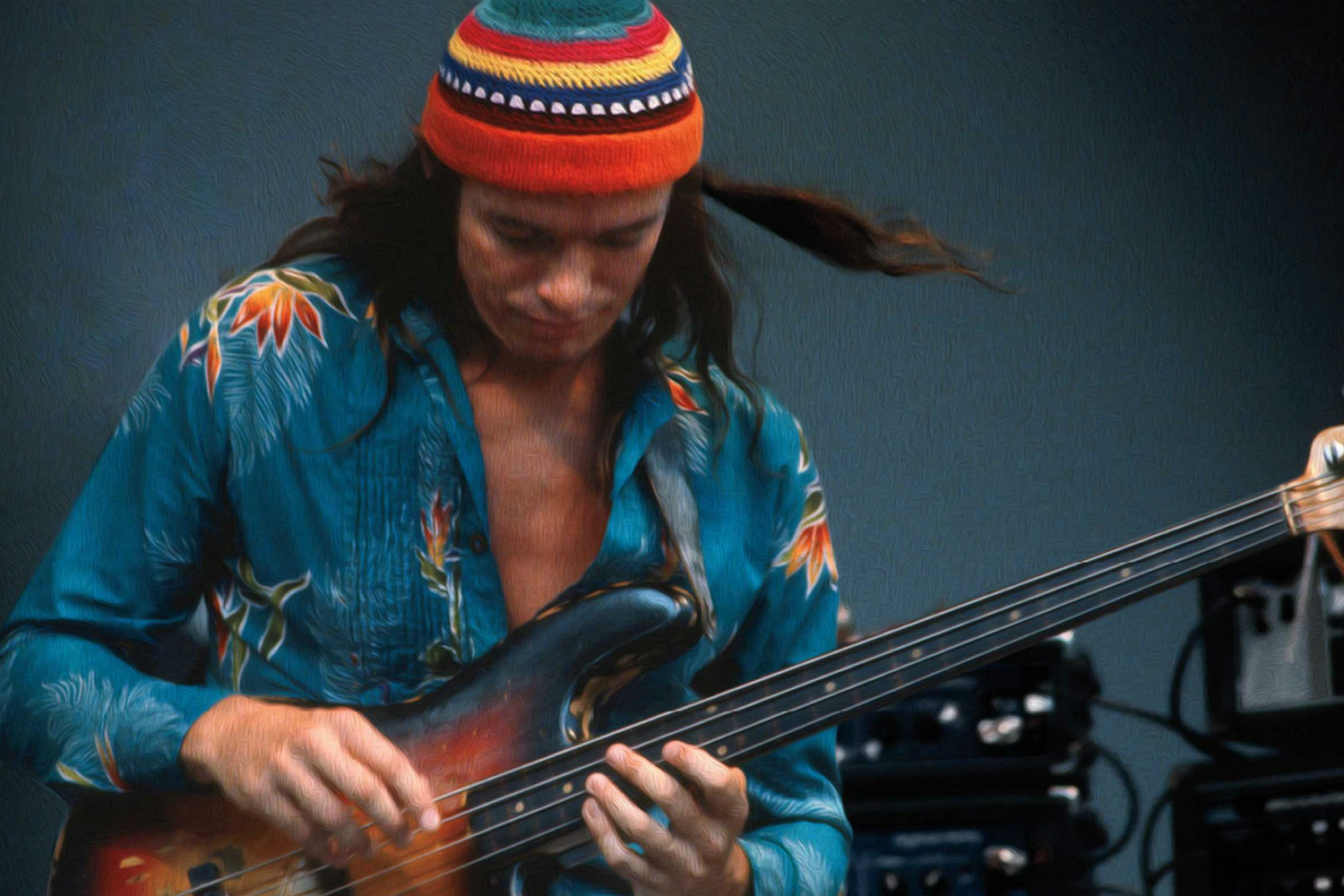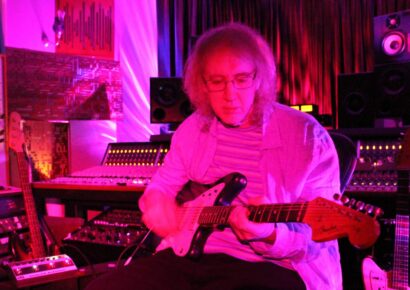Deep diving into the gear behind Jaco Pastorius, one of the bass guitar's all time greats.
Few artists have been as monumental to the direction of electric bass guitar than Jaco Pastorius. Born in Florida in 1951, Pastorius began playing double bass after losing the ability to play drums following a wrist injury, before turning to the dark side – or going electric – as a teenager.
Jaco Pastorius
Read up on all the latest features and columns here.
In his youth, Pastorius was an in-demand session player, cutting his teeth with the likes of Herbie Hancock and Joni Mitchell before unleashing his full talent unto the world with a six-year stint in jazz-fusion all-stars Weather Report, where he notably performed on their classic rendition of ‘Birdland’ before leaving to enjoy a prosperous solo career.
Despite his relatively brief career, Pastorius’ influence can’t be understated – his use of harmonics, lyrical bass solos, effects and smooth, fretless runs set the standard for modern electric bass playing.
In this week’s Gear Rundown, we take a look at the iconic instruments behind Pastorius’ tone in celebration of one of the all time greats.
Jaco Pastorius bass
1966 FENDER JAZZ BASS
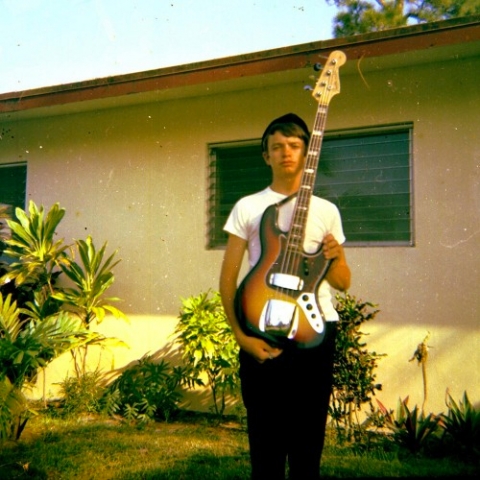
After his double bass became warped from the humidity of his home state of Florida, a 15-year-old Pastorius saved up for months to afford a brand new 1966 fretted Fender Jazz Bass, complete with block inlays and a bound fretboard.
This bass remained Pastorius’ number one bass throughout his adolescence, playing it throughout his tenures with early groups The Woodchucks and the Las Olas Brass Band.
1962 FENDER JAZZ BASS – ‘THE BASS OF DOOM’
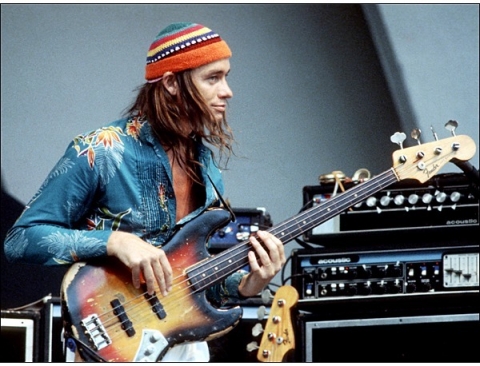
Renowned as being one of the most famous basses in the world, the story being Pastorius’ number one instrument is almost as complex and mysterious as Pastorius himself. Hailing from 1962, the Sunburst Bass of Doom was supposedly de-fretted by Pastorius with a butter knife upon purchasing it for $90 in the early ’70s, filling the fret slots with plastic wood and applying multiple coats of Poly Poxy to cover up the gouges he created from his home job.
Despite his unprofessional guitar tech work, Pastorius’ playing on the Bass of Doom was nothing short of genius, utilising its narrow neck and round-sounding bridge pickup to hone in his signature playing style heard on recordings by the likes of Joni Mitchell, Herbie Hancock, and Weather Report.
While the tone of the bass and Pastorius’ expert knowledge of the instrument are of mythical proportions themselves, what’s really fascinating about this instrument is the tale of how it disappeared for more than 20 years, only to be brought home to Pastorius’ family by none other than Metallica bassist Robert Trujillo.
Shortly before his death, Pastorius discarded the fabled instrument in New York’s Central Park in 1986, where it supposedly disappeared from the face of the earth before reappearing in mysterious circumstances in 2008 by an unnamed collector.

Upon hearing news of the reappearance of the Bass of Doom, Pastorius’ family embarked on a legal battle to receive ownership of the instrument, which supposedly turned ugly and almost bankrupted the Pastorius estate.
This resulted in Trujillo, a longtime Pastorius fan, buying the Bass of Doom from the anonymous owner in order to return it to his family. Read all about Trujillio’s take on the story here, and make sure to check out Bass Player Magazine’s experience with the instrument after it re-emerged in 2008.
1960 FENDER JAZZ BASS – FRETTED
Acting as his main fretted bass throughout his early career, this 1960 two-tone sunburst Jazz Bass was particularly favoured by Pastorius while touring with Joni Mitchell, and can be heard prominently on her album Shadows of Light. Jaco notably removed the pickguard from the instrument, which he supposedly believed assisted in creating its particuarly resonant tone.
1963 FENDER JAZZ/PRECISION BASS
In the early ’80s, Jaco starred in an instructional video titled Modern Electric Bass, playing a hybrid Jazz/Precision bass throughout the film. This bass features a ’70s Precision Bass neck with a maple fretboard bolted onto the body of a Sunburst Jazz body, and was later sold to a collector with both the original neck and its ’70s P-Bass replacement included.
1960s FENDER JAZZ BASS – THE ‘HIROSHIMA BASS’
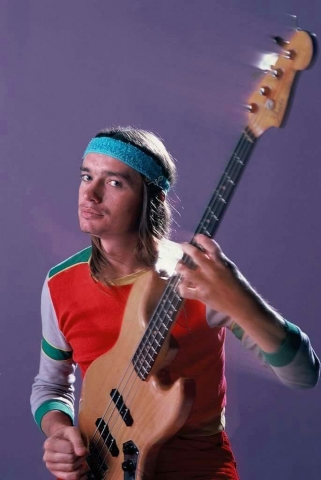
With a character as eccentric as Pastorius, you’re always bound to have some pretty bizzare instrument stories, but this one might just top the charts. While touring in Japan in 1982 in support of his LP Word Of Mouth, Pastorius apparently hurtled this instrument into the depths of Hiroshima Bay—apparently, he didn’t like it that much. Ibanez Guitars later recovered the bass and refinished it in a natural finish.
Pastorius was diagnosed with bipolar disorder shortly after the tour, with his relentless touring schedule undoubtedly worsening his condition over time until his untimely passing in 1986.
BRESLIN 5 STRING ACOUSTIC
Co-designed by luthier Larry Breslin and Pastorius in 1974, this fretless acoustic bass featured an additional high C string, and boasted premium appointments such as a Brazilian rosewood fretboard with maple veneer fret-markers, a spruce top and Brazilian rosewood back and sides. After breaking the headstock, Pastorius took the instrument to his luthier Kevin Kaufman, who still has the instrument today.
AMPLIFIERS
ACOUSTIC 360-361PP COMBO AMP
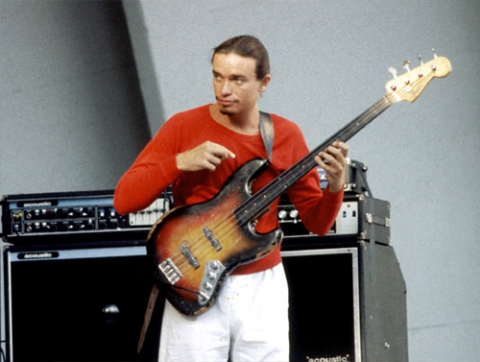
After playing through a 200 watt Sunn rig as a teenager, Pastorius quickly converted to the sheer power of the Acoustic 360-361PP after borrowing one from a friend to play a gig and being blown away by the responsiveness of the amp and its huge 18 inch inverted speaker cabinet. He would go on to play through the amps simultaneously on later tours.
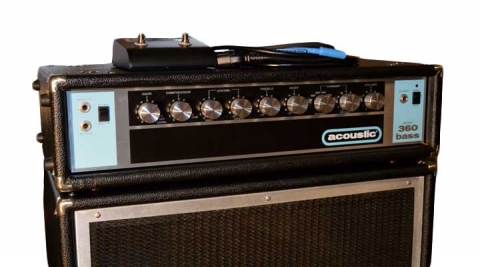
The responsive tone of the Acoustic 360-361PP allowed Pastorius to pull off his signature pitch-bending harmonics with ease, certifying the model’s status as one of the key amps of the 1970s.
EFFECTS
MXR RACKMOUNT DIGITAL DELAY
Jaco prominently used an MXR rack-mounted delay through one of his amps while the other remained dry, resulting in a lush, modulated chorus tone when using short delay times, as well as using its sampling function to loop passages on songs like ‘Slang’.
For all things Jaco Pastorius, head here.
